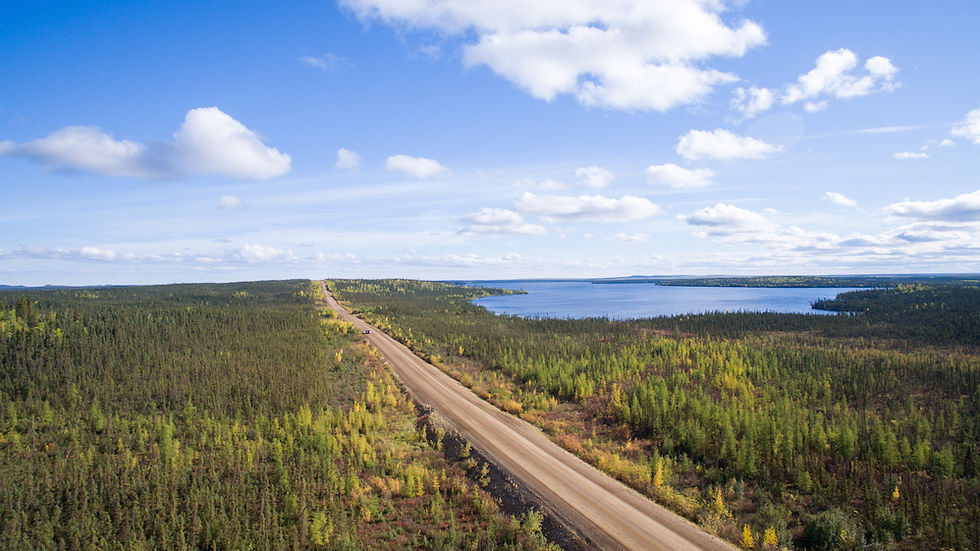5 fabulous bike rides in Canada’s Northwest Territories
- Nele Remstedt

- Sep 6, 2023
- 2 min read

The Northwest Territories isn’t famous for cycling. Yet!
Its rough-and-tumble landscape seems better designed for floatplanes and snowmobiles than for leisurely two-wheeled cruising. But in several select locales, it’s a pedal-pusher’s paradise. If you’re a winter “fat-biker”, long-distance road-rider, a backcountry “bike-packer”, or a lover of technical rock-riding, you’ve got to make tracks for the Northwest Territories:
The Dempster Highway
Are you ready for North America’s greatest road-biking expedition? The Dempster is Canada’s northernmost highway, snaking 737 kilometres from the goldfields of the Klondike, across the Arctic Circle, to the polar hub of Inuvik in the Mackenzie Delta. From there, cyclists can continue up the new Inuvik to Tuktoyaktuk highway to dip their toes in the Arctic Ocean.
For cyclists, the hazards en route are many – everything from choking dust to charging grizzly bears. On the upside, the alpine scenery is astounding, traffic is minimal, you can camp wherever you please, and wild caribou might keep you company as you pedal. A couple dozen independent riders tackle this route every summer, or you can sign up with Cycle Canada for a July guided tour.

Yellowknife Slickrock
Sheathed in stone, the Yellowknife area is an unsung northern Moab, with all sorts of flowy rock to challenge skilled mountain bikers. While official cycling paths are few, the Prelude Lake Nature Trail is a blissful exception. This three-kilometre loop boasts acres of smooth granite, technical climbs and drops, great views of the nearby lake, and convenient boardwalks across patches of spruce bog.

Canol Heritage Trail
Canada’s toughest backpacking route is only slightly easier for “bike-packers” – but if you’re intrepid, this might well be the world’s greatest wilderness ride. The trail follows 355 kilometres of the defunct Canol Road – an old military route through the Mackenzie Mountains, descending from the Yukon border to the Mackenzie River. There’s not a single settlement en route, the bridges are all washed out, and there’s more than a little bit of hike-a-biking and bushwhacking, but skilled riders have completed the trail in as few as eight life-changing days.

Winter “Fat Biking”
When heaven freezes over, Northerners hop on their big-wheeled fat bikes. That’s because the whole of the Northwest Territories becomes a beckoning bike trail – the lakes now frozen four-feet thick, the once-daunting rocks now bathed in soft snow, the bogs and sand dunes suddenly solid and firm. On broad-tired cycles, winter riders have performed impressive feats, such as pedaling across Great Slave Lake. For cyclists who are less ambitious, every Northern town is surrounded by snowmobile trails that are a fat-bike-riding pleasure.

The Fitz-Smith Trail
Approximately 17 kilometres one way, this backwoods ride showcases many of the wonders of the Fort Smith region. The route follows a pine-shrouded, gently undulating path high above the mighty Slave River, providing views of the Mountain, Cassette and Pelican rapids, and of the white pelicans that nest there. It also crosses the Northwest Territories-Alberta border, linking the North’s southernmost town, friendly Fort Smith, with Alberta’s northernmost one, the sleepy waterfront settlement of Fort Fitzgerald, which was once the start of the famous Slave River portage.

Further information on the Northwest Territories can be found at www.spectacularnwt.com.



Comments